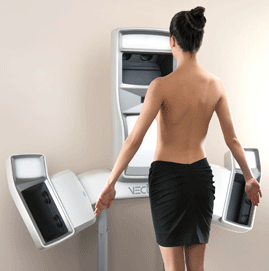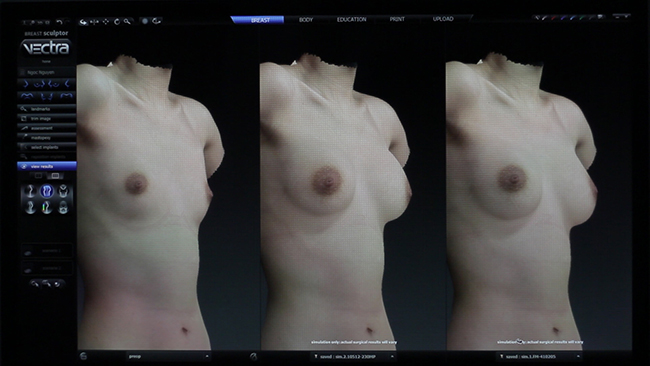
You’ve been considering a breast augmentation for a while now, but still have questions about the outcome of surgery. Will it look right on me? Will I love the results? Will my plastic surgeon understand the look I’m trying to achieve? These unanswered questions can create a lot of anxiety. For a better outcome, many surgeons offer 3D imaging to give patients a much better idea of what to expect. Once your surgeon has a pre-op photo of you, a 3D image is created to better assess what type of implant may be the most suitable to your body shape. From there, you and the surgeon have a much better idea of the expectations after surgery.
By Robert Whitfield, MD
and Beverly Brooks
ThePlasticSurgeryChannel.com
Photos v. 3D Imaging
Any type of visual image can help your surgeon meet your goals. However, simply bringing in a photo may not be enough. The impression you have of breast size may not look the way you expected on your body. A picture can be a good starting point, but 3D imaging can provide a much more accurate assessment post-operatively. After taking a patients specific measurements, you can try different sized implants and even try out silicone or saline implants with different widths and projections to see how they look on your body.

Advanced Technology
Imaging technology prior to surgery is advancing rapidly. Results from 3D images take into account not only the breast implant size and shape that will be placed, but also your own natural tissue. The density and sagginess of the breast won’t be exactly like the outcome, but it’s extremely close. It provides an excellent resource and visual image for the patient.
 The image can be rotated and viewed from above or below. With up to date information on breast implant sizes and shapes, the software visually approximates the appearance changes you can expect after breast augmentation. An overlay or ghost image of the expected outcome, over your original photo can be used to understand the changes in breast shape and volume.
The image can be rotated and viewed from above or below. With up to date information on breast implant sizes and shapes, the software visually approximates the appearance changes you can expect after breast augmentation. An overlay or ghost image of the expected outcome, over your original photo can be used to understand the changes in breast shape and volume.
Imaging to Reduce Buyer’s Remorse
“Right now too many people have surgery and end up with buyer’s remorse,” says Dr. Robert Whitfield, a board certified plastic surgeon in Austin, Texas. “We believe this technology will help us diminish that disappointment and ultimately produce better results throughout our specialty.” 3D imaging allows the experts to demonstrate exactly what they’re aiming for, while showing the patient what to expect via 3D imaging on a video monitor. It takes out a lot of the guesswork!














Facebook
Twitter
Instagram
YouTube
RSS